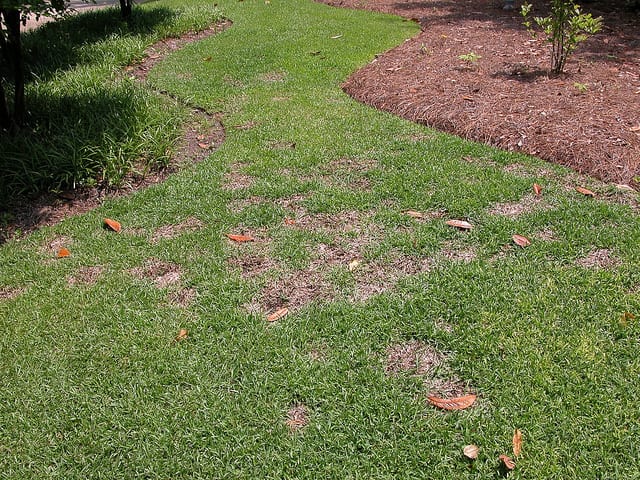A healthy lawn is your best defense against lawn diseases and other problems. But when the weather favors the disease more than your lawn, problems can occur. But there are ways to reduce the risk of disease and keeping your lawn healthy. Gardening expert Melinda Myers explains how.
Mow high to encourage deeply rooted grass that is more drought tolerant and resistant to disease problems. Water early in the day so the grass leaves, blades, dry quickly and less water is lost to evaporation.
Apply the right type and amount of fertilizer at the proper time to limit the risk of disease. Regular fertilization — three to four times per year — encourages better results since most soils do not contain the essential nutrients for optimum growth.
Avoid high nitrogen quick release fertilizers that promote lush succulent growth that is more susceptible to disease. Instead use a low nitrogen slow release fertilizer that promotes steady growth that’s more drought tolerant and resistant to disease.
Take a closer look at the lawn if you suspect a disease problem. Use a leaf rake to lift the matted grass, remove leaf litter and reduce the risk of this disease. Keep mowing throughout the fall and avoid heavy fertilization late in the year.
Monitor lawns for Brown Patch when temperatures and humidity rise and grass remains wet for long periods of time. Infected lawns will have somewhat circular patches of thin light brown grass. Look for white cottony strands of fungal mycelium early in the morning on dew covered lawns. Check grass blades for small irregular tan spots with dark brown borders on the individual grass blades. Avoid heavy fertilization with fast release fertilizer in early spring and summer.
Look for dollar size to 6-in. diameter spots of bleached or light tan grass if you suspect Dollar Spot. Infected leaves have white lesions with reddish tan margins that often resemble an hourglass. Over and under fertilization, drought, water on the grass blades for extended time and mowing too low all increase the risk of this disease.
Closely examine lawns with a reddish hue to confirm the presence of rust disease. Rust infected lawns are covered with an orange or yellowish powder, the fungal spores, that can leave an orange residue on your shoes. Newly seeded and lawns weakened by inadequate fertilization and drought are most susceptible.
Stay alert for leaf spot diseases that can attack lawns. Avoid excess fertilization and watering late afternoon and evenings.
Green thumbing it: How to keep your lawn healthy all season long











